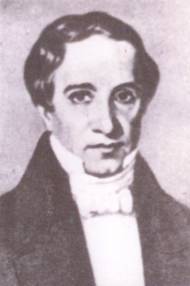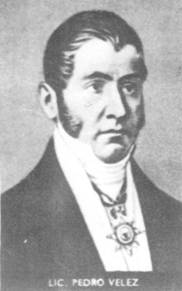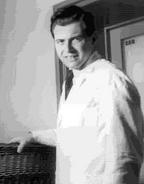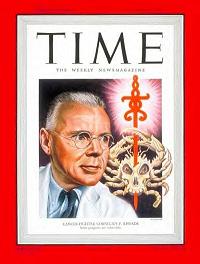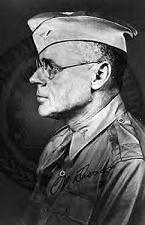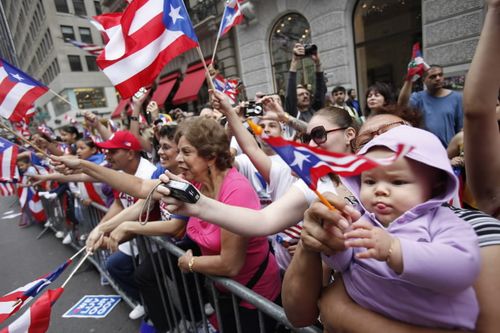Venezuela para materializar su aspiración emancipadora contó con la
valiosa participación de hijos de otras tierras; sacrificando su vida
e intereses en los movimientos precursores y en la lucha redentora,
que una vez lograda decidieron quedarse laborando hombro a hombro con
nuestros paisanos para desarrollar esta patria que está agradecida de
su abnegación, herencia, solidaridad y fraternidad; Italia aportó
más de cuarenta esforzados civiles y militares.
Representando a este valioso grupo que ocupan un sitial de honor en la
páginas de la historia mencionaremos a: los generales Agustín
Codazzi, destacado geógrafo y Carlos Luís Castelli veterano soldado
en la lucha emancipadora, cuatro veces ministro de la defensa, se
encuentran en el Panteón Nacional. Destacaron igualmente Francisco
Isnardi quien escribió el Acta de Independencia redactada por el Dr.
Juan Germán Roscio hijo de italiano; capitán de navío Sebastián
Boguier, coroneles Luís Santelli primer oficial exitoso en la
Campaña de Coro en 1810 y Gaetano Cestari, tenientes coroneles
Lanzarini, Passoni, Erzolani, mayor Perego, capitanes Ferraro,
Fuenticelli, Montebruni; Baroni, Palaviccini y Giacosa y el teniente
Sabino quien ofrendó su vida en la Casa Fuerte de Barcelona. La obra
escultórica sobre el Libertador en el Panteón Nacional es de Pietro
Tenerani y la réplica de la fabulosa estatua ecuestre del Padre de la
Patria ubicada en la Plaza Bolívar de Caracas es de Adamo Tadolini.
El primer monumento en el Inmortal Campo de Carabobo, la Columna
Ática construida en 1901 en el mismo sitio donde actualmente se
encuentra el Arco de Triunfo construido en 1921, lo realizó el
conocido escultor Julio Roversi, quien por cierto trajo la primera
bicicleta a Venezuela.
En esta ocasión nos referiremos a Tomás Molini el fiel secretario y
hombre de confianza de Miranda en las buenas y en las malas; lo conoce
en Londres en 1805, encargándose de la coordinación del viaje que
salió de Londres el 2 de septiembre de 1805 hacia Nuevas York para
iniciar el 2 de febrero del siguiente año su afán emancipador sobre
Venezuela, realizando escala en Haití donde se izó en el mástil del
navío Leander el 12 de marzo la bandera tricolor de la expedición
mirandina. Luego de la fallida incursión sobre Ocumare de la Costa,
Molini el 28 de abril, llega con Miranda a Trinidad.
Participa en los preparativos de la expedición sobre la Vela de Coro
el 3 de agosto de 1806, es firmante como secretario del Precursor de
la Proclama leída y colocada por él con tachuelas en las puertas de
las iglesias y en varios sitios públicos de Coro con la denominación
de "Proclamación de Don Francisco de Miranda, Comandante General
del Ejército Colombiano, a los pueblos habitantes del Continente
Américo Colombiano"; regresan el 31 de diciembre a Londres vía
Trinidad. En esa ciudad europea estará presente durante las
conversaciones que tuvieron con el coronel Simón Bolívar, Andrés
Bello y el Dr. Luís López Méndez, comisionados por la Junta Suprema
de Caracas, surgida el 19 de abril de 1810. Acompaña a Miranda en su
viaje a Venezuela que zarpa en el navío "Avon" el 10 de
octubre para llegar a La Guaira el 10 de diciembre de ese memorable
año. En junio de 1812 Molini es enviado a Inglaterra llevando
documentos confidenciales solicitando apoyo, el cual no pudo
concretarse por cuanto Miranda luego de la firma de la capitulación
ante Monteverde el 25 de julio de 1812, será detenido en La Guaira la
madrugada del 31 de julio y llevado encadenado a la prisión de Cádiz
donde fallece el 14 de julio de 1816.
Molini informaba en Londres el no cumplimiento de la capitulación por
parte de Monteverde, y solicitaba la solidaridad para que
intercedieran por la liberación del "mas universal de los
venezolanos". El eficiente secretario permaneció alojado un
tiempo en la residencia del Precursor adquirida en 1803, casa Nro 27
de Grafton Street- ahora Nro 58, adquirida por el gobierno venezolano
en 1978, remodelada y convertida en museo. Al conocer la muerte de
Miranda, Molini se preocupó en informar a los familiares y allegados
la infausta noticia. Este noble servidor ayudó financieramente a la
viuda Sara Andrews en la manutención de los pequeños hijos Francisco
y Leandro; se preocupó en ordenar el inventario de muebles y libros
que poseía Miranda en Londres y Paris; logró a través de
diligencias judiciales que los dos hijos del precursor recibieran
todas las pertenencias como legítimos herederos. Al mantener
correspondencias con el Libertador, le recomienda las atenciones a
Leandro (1803-1880) y Francisco (1806-1830), quienes deseaban
conocerlo y tenían previsto viajar a Bogotá en 1823. Estos jóvenes
le ofrecen a Bolívar en venta los valiosos documentos de su padre;
Sucre recibe la instrucción de adquirirlas para Bolivia, pero por
falta de recursos no pudo realizarse la negociación. La venta se
concretaría en 1827 cuando el presidente Gómez ordena el pago de
tres mil libras esterlinas para adquirir los sesenta y tres volúmenes,
los cuales se encuentran en la Academia Nacional de la Historia. Otra
importante actividad poco conocida o difundida de Tomás Molini,
cumpliendo la voluntad testamentaria de Miranda escrita en Londres en
1805 antes de salir hacia Nueva York, fue la de coordinar con la
Universidad de Caracas la entrega de los "clásicos griegos"
de su famosa biblioteca, con la cláusula "Siempre que se haga
independiente".
(*) Gral. de Bgda
Artículo enviado desde la página web del Diario
El Carabobeño
Sent by Robert Perez Guadarrama perezfru@telcel.net.ve
| |
|
The
Battle of Medina
The
final Battle of the First Republic of Texas.
by
Tom Green
Texas Society of the American Revolution
|
| |
|
The Battle of Medina occurred
to the north of this area, and was the largest land battle ever to occur
on Texas soil. It is believed that this high ground
was the command position of the Spanish Army. This
battle was an important event in world history as it affected the United
States, Spain, Mexico, France and Texas. On August
18, 1813, the Republican Army of the North, led by General Jose Alvarez
de Toledo y Dubois was defeated by the Spanish Royalist Army, led by
Spanish General Joaquin de Arredondo. There were
approximately 1,400 men in the Republican Army of the North at the time,
composed of U.S. citizens from the American Revolution and other Anglos,
Tejanos, Indians, former Royalist soldiers who had deserted the Spanish
Army, and at least one Black slave. General Toledo and his men had
camped about six miles north of this area and after struggling through
miles of “sugar-sand” the Republican Army engaged the main body of
the Spanish Army in the valley to the north of Galvin Creek, and were
slaughtered by the Royalists Army.
In 1821, some nine years after
the battle, Jose Felix Tresplacios, the first Governor of Texas, after
Mexico gained their independence from Spain, is believed to have had the
remains of the Republican Army gathered from the surrounding area and
buried beneath an Oak tree in this area where the El Camino Real, also
called the Laredo Road, crossed the area. There is
another story that Tresplacios had the skulls of these heroes buried in
a small church cemetery in the area. Efforts continue
to locate these remains.
The effort to free Texas from
Spain was begun by Father Miguel Hidalgo y Costilla, who rang the church
bell in Dolores, Mexico on September 16, 1810, celebrated today as Diez
y Seis Septiembre. After Father Hidalgo was executed
on August 4, 1811, Col. Don Jose Bernardo Maximiliano Gutierrez de Lara
took up the effort to free Texas from Spain. Col. Gutierrez visited
Washington, DC and gained support for his efforts. In
1812, Lt. Augustus William Magee, who had commanded U.S. Army troops
guarding the border of the “Neutral Ground” between Louisiana and
Texas, resigned his commission, and formed the Republican Army of the
North to aid what historians have called the Gutierrez-Magee Expedition.
These actions were done with the knowledge of U. S. Secretary of State
James Monroe, through his agent, U.S. Navy Captain William Shaler, who
arranged for Magee’s men to resign from the U.S. Army, and come to
Texas with Col. Gutierrez. There is also a story that
General James Wilkinson, the uncle of the Mother of Texas, Jane Long was
involved in Lt. Magee and his men leaving the American Army and joining
Bernardo Gutierrez’s Republican Army of the North, as it was called.
Nacogdoches
was taken on August 12, 1812, with little opposition, and on November 7,
1812 the Republican Army of the North marched into what is present day
Goliad where they took the Presidio La Bahia, also with little
resistance. However, within six days the Spanish Army from San Antonio
surrounded La Bahia beginning a four month siege, which is the longest
in Texas history. While at La Bahia, Augustus Magee mysteriously died on
February 6, 1813, some say from poisoning, others say suicide, while
other say he died of consumption. After numerous battles, heavy losses
and out of supplies, the Spanish lifted the siege and returned to Bexar.
On
March 25, 1813, the Republican Army of the North left La Bahia for Bexar
after receiving reinforcements from the Lipan, Tonkawa and Couschatta
Indians recruited by Captain John McFarland. Col.
Samuel Kemper replaced Col. Magee, and Lieutenant Colonel Reuben Ross
was elected second in command.
On
March 29, 1813 the Republican Army of the North, consisting of 600 to
900 men, was marching toward the Mission San Francisco de la Espada, on
their way to capture San Antonio de Bexar, when they encountered between
900 and 1,500 Royalist soldiers of New Spain near the confluence of the
Rosillo and Salado Creeks. This became known as the
Battle of Rosillo Creek, which occurred about 9 miles southeast of San
Antonio. The battle lasted about an hour and was a disaster for Spain,
with Royalists losses between 100 and 300 men. Samuel
Kemper lost only 6 men, one of which was the Chief of the Conushatta
tribe, Chief Charley Rollins who had brought 25 of his tribe to assist
the Republican Army and died in the Battle of Rosillo Creek. This was
the victory that brought about the First Republic of Texas, since at
that time, there were no more Spanish Armies in Texas to conquer.
On
April 1, 1813, Col. Samuel Kemper marched his men to the gates of the
city of San Antonio de Bexar, where they were met by envoys of the
Spanish Governor Manuel Maria de Salcedo carrying a white flag of truce.
The Governor surrendered the city unconditionally to the Republican Army
of the North, and the first Texas Declaration of Independence was
adopted on April 6, 1813, establishing Bernardo Gutierrez as the head of
the first Republic of Texas.
The
first Republic of Texas was short lived, as considerable political
intrigue resulted from the executions of the Spanish Governor and his
staff. Over all command remained with Gutierrez for a
short time, but command of the Republican Army changed, as Samuel
Kemper, returned to Louisiana with 100 men after the Spanish Governors
were marched out of town and murdered. Bernardo Gutierrez was blamed for
these murders, and many of the Americans left the expedition at this
point. Reuben Ross replaced Kemper, but the remaining
troops did not trust Ross, and he rode off in the night abandoning his
command. The men then elected Major Henry Perry to assume command of the
army. Major Perry took charge of the Republican Army of the North
and the army rode out to meet the Royalists in the Battle of Alazan,
located west of the city of San Antonio. This was the last victory of
the Republican Army of the North.
On
August 4, 1813 General Jose Alvarez de Toledo y Dubois deposed Bernardo
Gutierrez, who then returned to Louisiana to later fight at the Battle
New Orleans. This peaceful replacement of commanders
was aided by the first news papers printed in Texas. A
copy of the first news paper can be purchased at the Old Stone Fort in
Nacogdoches, Texas. Soon after taking command of the
Republican Army, General Jose Toledo learned that a Royalist Army of
approximately 1,830 men was marching toward San Antonio. Toledo
marched his approximately 1,400 men south of San Antonio to the Medina
River on August 15, 1813. On the night of August 17,
1813 Toledo camped with his men near the Gallinas Creek located between
the Atascosa and Medina Rivers.
This
camp was located about 6 miles from the camp of the Spanish Army
commanded by General Joaquin de Arredondo. Toledo’s
plan was to ambush the Royalists Army as they marched up the El Camino
Real the next morning, however General Arredondo anticipated an ambush
by the Republican Army and he sent a small advance detachment, under the
command of a young 19 year old Lt. Antonio Lopez de Santa Anna, up the
road to learn the location of the Republican Army. General
Arredondo had the bulk of his army hidden in the trees near Galvan
Creek, located some three miles west of present day community of Espey,
Texas. General Toledo wanted his army to wait for the
main body of the Spanish Army to march into his ambush before his men
were to attack, but one Royalist soldier, Alferes (Ensign) Don Francisco
Lopez, wandered away from the advance Royalists unit and came so close
to the Republican Army in ambush, that a trigger-happy Republican fired
at Lopez.
The
element of surprise was lost and the Anglo Republicans (called the
Madison Battalion), commanded by Major Henry Perry led the American
troops, and Captain Don Miguel Menchaca, who led the Mexican troops
charged after the Spanish unit. It is believed that
General Toledo attempted to stop his army from charging out into the
open sand field, but the men refused to withdraw, and charged madly
after the advance guard of the Spanish Army probably thinking this was
the entire Spanish Army. The men trudged through deep
sand for several hours, dragging their cannons, in hot pursuit of the
Spanish Cavalry, which had come to the aid of the advance unit, and were
mistaken for the main body of the Spanish Army. The
Republicans were hot, thirsty, and exhausted by the time they came
within 40 yard of the main body of the Spanish Army hidden in the Oak
Forest near Galvan Creek, who opened fire with cannons and muskets.
The Republicans killed many of the cannon crews, and almost
flanked the Spanish Army, but were driven back.
General
Arredondo was about to sound retreat, but leaned from a turncoat,
believed to have been Col. Miguel Muzquiz, who was involved with the
capture and death of Phillip Noland, that the Republican Army was beaten
and would have to soon withdraw, so Arredondo rallied his men one last
time and over-ran the exhausted Republican Army as they broke and ran.
After a furious four hour battle, the Spanish Army completely destroyed
the Republican Army of the North. Less than 100 Republicans are believed
to have escaped as the Spaniards killed everyone they came across,
butchering the men by the hundreds and hanging part of their bodies in
trees. No effort was made to bury the remains of the Republican Army and
the remains lay on the battle field for nine long years. The
approximately 1,300 men killed in the Republican Army exceeds the total
number of “Texians” killed during the entire 2nd Texas
Revolution some 23 years later in 1836.
It
was not until 1822, when Jose Felix Trespalacios, the first Governor of
Texas under the newly established Republic of Mexico, had his soldiers
gather the remaining bones of the Republican Army of the North and
buried them honorable under a large Oak tree that grew on the
battlefield along side the Laredo Road where it crossed the battlefield.
The La Bahia Award winning author, Robert Thonhoff believes he
has located the ancient Oak tree where Governor Trespalacios had his men
bury the remains of the Republican Army of the North, and it is at that
tree that we, the Sons of the American Revolution have placed a marker
to honor Peter Sides, and the other men who died here August 18, 1813.
My
son-in-law, Brian Childs descends from Peter Sides who was born about
1750 in North Carolina where he served as an Ensign with the 2nd
Battalion North Carolina Militia in the American Revolution. He married Barbara Carpenter in about 1774 and the family moved
to Tennessee before moving on to Louisiana in about 1799. Peter
Sides then joined Lt. Augustus William Magee and his men who came to
Spanish Texas with Jose Bernardo Gutierrez de Lara to free Texas from
Spain. Peter Sides died at the Battle of Medina, as proven
by survivors of the battle Isaac Foster and Samuel Sexton, who testified
they saw Peter Sides engaged in the Battle against the Spanish Royalists
on the 18th of August in 1813.
We
also honor all the men who died in this, the largest battle ever fought
on Texas soil.
Compiled and provided by Thomas B.
Green, Former President of the Texas Society of The Sons of the American
Revolution, and former District Representative of The Sons of the
Republic of Texas. A marker with the above information was dedicated on
August 18, 2003, the 190th anniversary of the Battle of
Medina. SAR and SRT markers were also dedicated the
same day in honor of Peter Sides, the only Patriot of the American
Revolution to have been proven to have died in the Battle of Medina.
In succeeding years the Mayflower Society, the Daughters of the
Republic of Texas, the Daughters of the American Revolution, and
Daughters of the War of 1812 Society have all
dedicated markers, as has the State Historical Commission.
|
| |
Update on
FamilySearch Certified Software news
|
| |
Here is some
important information regarding FamilySearch Certified software
applications: FamilySearch Certified software applications
have features developed by commercial entities that work directly
with the new.familysearch.org Web site. Information about their
products and their certified features is posted weekly at: http://www.familysearch.org/eng/affiliates/index.html
A direct link to
this informational Web page is available at new.familysearch.org,
More Great Products.
Please check the
Web page regularly to see the most current information about
FamilySearch Certified software applications. The page lists each
product and its certified features. It also includes a legend that
describes the certified features.
Some of the
FamilySearch Certified software applications are also certified
for ordinance status, reservation, and request. These include the
following:
AllMyCousins.com
from GeneSys Foundation (ordinance status only)
Ancestral Quest
from Incline Software (ordinance Status, reservation, and request)
FamilyInsight
from Ohana Software (ordinance status, reservation, and request)
MagiKey Family
Tree from MagiKey (ordinance status only)
RootsMagic 4
from RootsMagic (ordinance status, reservation, and request)
|
| |
|
Resources for Tracing Hispanic Roots
Posted by Diane Haddad |
| |
|
Today’s the start of Hispanic Heritage month, honoring the
histories of the United States’ 46.9 million residents of Hispanic
origin, who according to the Census Bureau make up the nation's
largest ethnic minority.
About 64 percent of the country’s Hispanic residents have a
Mexican background; 9 percent are Puerto Rican; 3.5 percent, Cuban;
3.1 percent, Salvadoran; and 2.7 percent, Dominican.
Four Hispanic surnames ranked among the 15 most common last names in
the 2000 US census: Garcia (placing eighth with 858,289
occurrences), Rodriguez (ninth), Martinez (11th) and Hernandez
(15th).
Researching Hispanic roots? Here are some places to start:
Our online Hispanic Heritage Toolkit has resources and tips for
learning about Mexican, Spanish, Portuguese, Basque, Central and
South American ancestors. See our advice for research in the Caribbean, too.
Visit the free FamilySearch Record Search Pilot to look for
ancestors in the 1930 Mexican census; Mexican baptisms, marriages
and burials; and church records from several Mexican states. (Scroll
down on this page to see the list).
The site also has a growing collection of church, civil registration
and census records from the Caribbean and Central and South America.
Ancestry.com and the free Ancestry Library Edition (see if it’s
available at your library) have border-crossing records from Mexico
covering 1903 to 1957. These records are on microfilm at the
National Archives.
Those with Mexican ancestry can use our Mexican Research Guide,
available as a $4 download in our online store.
Besides researching your Hispanic roots, here are a couple of other
ways to mark the occasion: The Smithsonian lists some events
and educator resources, and takes you on a virtual Hispanic heritage
cultural tour. PBS is airing "Latin Music USA," a
documentary series, Mondays, Oct. 12 and 19, from 9 to 11 p.m. ET.
|
| |
|
The Family History Library in Salt Lake City, Utah
|
| |
The Family History Library in Salt Lake City, Utah, is the largest genealogical library in the world and provides access to many collections of records, with more than two billion names of deceased people. Over 700 staff and volunteers assist patrons with family history work. Approximately 1,900 people visit the library each day.
The Church has established over 4,500 family history centers in 70 countries, with access to many of the resources at the main library in Salt Lake City, Utah.
The Church also operates one of the most popular genealogical services on the Internet free of charge at www.familysearch.org. The site contains a billion names from over 110 counties and territories including the 1880 United States Census, the 1881 Canadian Census, the 1881 British Census, the Ellis Island database and the Freedman’s Bank Records. However, most of the Church’s vast collection of genealogical resources is yet to come online. The Church is undertaking a massive digitization project to bring most of the additional collection of the Family History Library online over the next few years.
Because genealogical records are irreplaceable, the Church has constructed a climate controlled storage facility in Utah which houses more than 2.3 million rolls of microfilm and 180,000 sets of microfiche.
|
| |
|
3 September 2009
New Projects Added in August
|
| |
August was a banner month for FamilySearch Indexing. Twenty five (25) projects were completed and 19 new projects were added, including 10 international.
• Argentina, Mendoza, San Juan—Censo 1869
• Chile, Concepción—Registros Civiles, 1885–1903 [Parte 1]
• Mexico, DF—Registros Parroquiales, 1898–1933 [Parte 2]
• Mexico, Hidalgo—1930 Federal Censo
• Mexico, Jalisco—1930 Federal Censo
• Nicaragua, Managua—Registros Civiles, 1879–1984 [Parte 1]
• U.S., Arkansas—County Marriages, 1837–1957 [VII]
• U.S., Indiana, Benton County—Marriages, 1811–1959
• U.S., Indiana, Ohio County—Marriages, 1811–1959
• U.S., Iowa—1920 Federal Census
• U.S., Ohio—1920 Federal Census
• U.S., Texas—1920 Federal Census
• U.S., Utah, Salt Lake County—Birth Registers, 1890–1908
• U.S., West Virginia—1920 Federal Census
• U.S., Wisconsin—1920 Federal Census
(See the chart below for a complete list and current status of all indexing projects.)
Recently Completed Projects
(Note: Recently completed projects have been removed from the available online indexing batches and will now go through a final completion check process in preparation for future publication.)
• Argentina, Jujuy, Salta, Tucuman—1869 Censo
• Mexico, DF—Registros Parroquiales, 1886–1933 [Parte 1]
• Mexico, Yucatan—1930 Federal Censo
• Nicaragua, Managua—Registros Civiles, 1879–Present
• Perú, Lima—Registros Civiles, 1910–1930 [Parte 1]
• U.S.—Freedmen Marriages, 1861–1869
• U.S., Arkansas—County Marriages, 1837–1957 [IV]
• U.S., Arkansas—County Marriages, 1837–1957 [VI]
• U.S., Delaware—Birth Records, 1861–1922
• U.S., Georgia—Deaths, 1930
• U.S., Indiana, Adams County—Marriages, 1811–1959
• U.S., Minnesota—1885 State Census
• U.S., Oklahoma—1920 Federal Census
• U.S., Oregon—1920 Federal Census
• U.S., Pennsylvania—1920 Federal Census
• U.S., Tennessee—1920 Federal Census
• U.S., Utah, Salt Lake County—Death Certificates, 1940
• U.S., Virginia—1920 Federal Census
• U.S., Washington—1920 Federal Census
• U.S., Washington—County Marriages, 1858–1950
• U.S., Wyoming—1920 Federal Census
Current FamilySearch Indexing Projects, Record Language, and Percent Completion
Argentina, Buenos Aires—1855 Censo Spanish 91%
Argentina, Mendoza, San Juan—Censo 1869 Spanish (New)
Argentina, Santiago, Santa Fe—1869 Censo Spanish 57%
Chile, Concepción—Registros Civiles, 1885–1903 [Parte 1]
Spanish (New)
España, Avila, Moraleja de Matacabras—Registros Parroquiales, 1540–1904 Spanish 86%
España, Lugo—Registros Parroquiales, 1530–1930 [Parte 1] Spanish 21%
France, Cherbourg—Registres Paroissiaux, 1802–1907 French 3%
France, Coutances—Registres Paroissiaux 1802–1907 French 3%
France, Coutances, Paroisses de la Manche, 1792–1906 French 90%
France, Paris—Registres Protestants, 1612–1906 [Partie 2] French 35%
France, Saint-Lo—Registres Paroissiaux, 1802–1907 French 7%
Italy, Trento—Baptisms, 1784–1924 [Part 1] Italian 95%
Italy, Trento—Baptisms, 1784–1924 [Part 2] Italian 25%
Jamaica, Trelawny—Births, 1878–1930 English 73%
Mexico, DF—Registros Parroquiales, 1898–1933 [Parte 2] Spanish (New)
Mexico, Hidalgo—1930 Federal Censo Spanish (New)
Mexico, Jalisco—1930 Federal Censo Spanish (New)
Mexico, Mexico—1930 Federal Censo Spanish 56%
New Zealand—Passenger Lists, 1871–1915 English 17%
Nicaragua, Managua—Registros Civiles, 1879–1984 [Parte 1] Spanish (New)
Perú, Lima—Registros Civiles, 1910–1930 [Parte 2] Spanish 75%
U.S., Illinois, Cook—Birth Certificates, 1916–1922 [Part 2] English 71%
U.S., Indiana, Allen County—Marriages, 1811–1959 English 47%
U.S., Indiana, Benton County—Marriages, 1811–1959 English (New)
U.S., Indiana, Carroll County—Marriages, 1811–1959 English 80%
U.S., Indiana, Ohio County—Marriages, 1811–1959 English (New)
U.S., Iowa—1920 Federal Census English (New)
U.S., New York—1905 State Census English 65%
U.S., Ohio—1920 Federal Census English (New)
U.S., Texas—1920 Federal Census English (New)
U.S., West Virginia—1920 Federal Census English (New)
U.S., Wisconsin—1920 Federal Census English (New)
Venezuela, Mérida—Registros Parroquiales, 1654–1992 [Parte 1] Spanish 61%
Österreich, Wiener Meldezettel, 1890–1925 German 2%
Украина, Киев—Метрические Книги, 1840–1842 Russian 30%
(*Percentage refers to a specific portion of a larger project.)
FamilySearch Support
support@familysearch.org
Sent by Lorraine Hernandez
|
|
I don't think our kids know what an apron is.
The principal use of Grandma's apron was to protect the
dress underneath,because she only had a few,it was easier to
wash aprons than dresses and they used less
material, but along with that, it served as a potholder for
removing hot pans from the
oven.
It was wonderful for drying children's tears, and on occasion
was even used for cleaning out dirty ears.
From the chicken coop, the apron was used for carrying eggs, fussy
chicks, and sometimes half- hatched eggs to be finished in the warming
oven.
When company came, those aprons were ideal hiding places for shy
kids.
And when the weather was cold, grandma wrapped it around
her arms.
Those big old aprons wiped many a perspiring brow, bent over the
hot wood stove.
Chips and kindling wood were brought into the kitchen in that
apron.
From the garden, it carried all sorts of vegetables. After
the peas had been shelled, it carried out the
hulls.
In the fall, the apron was used to bring in apples that had
fallen from the trees.
When unexpected company drove up the road, it was surprising how
much furniture that old apron could dust in a matter of seconds.
When dinner was ready, Grandma walked out onto the porch,
waved
her apron, and the men knew it was time to come in from the
fields to dinner.
|
12/30/2009 04:49 PM
|
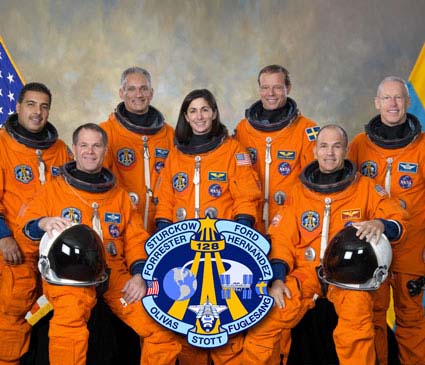
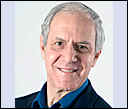 Notes from the Director
of the Smithsonian
Notes from the Director
of the Smithsonian 

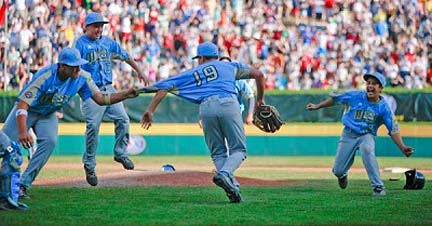
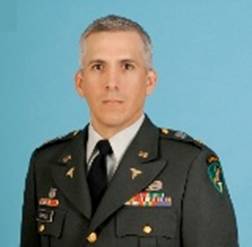
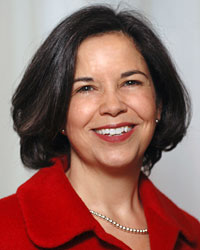
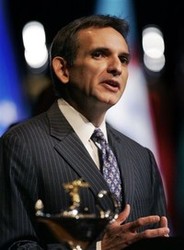
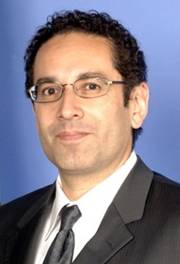
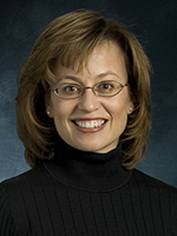

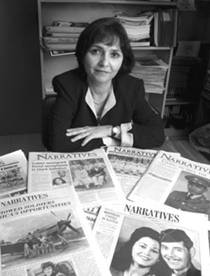
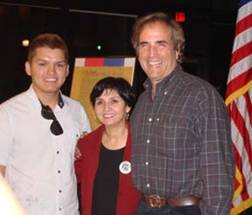
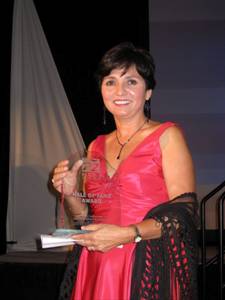
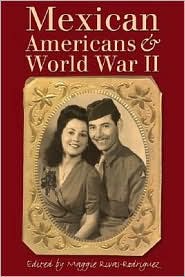
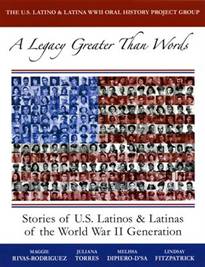
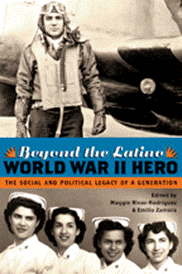
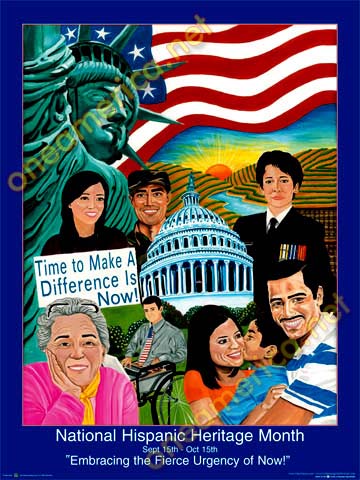
 The
effort will roll out across several ESPN and ESPN Deportes platforms,
including television, radio, print and online.
The
effort will roll out across several ESPN and ESPN Deportes platforms,
including television, radio, print and online.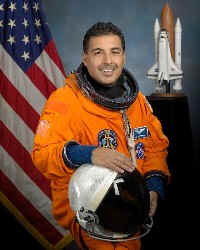
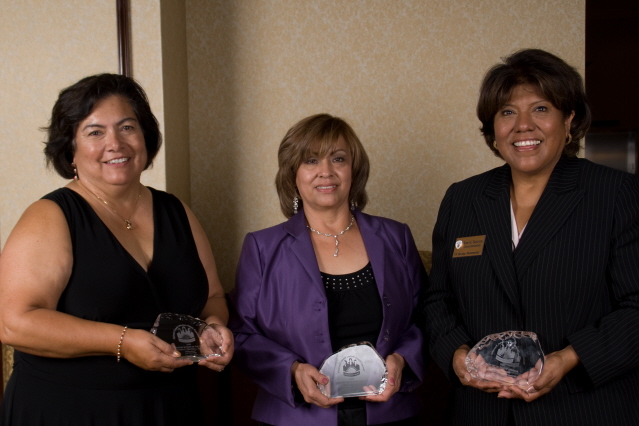
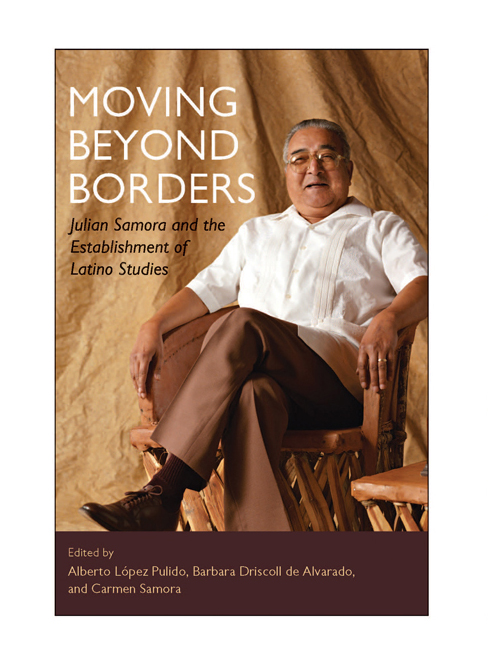
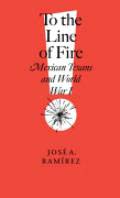 A new, award-winning book by Laredo Community College
history instructor Dr. José A. Ramírez reveals how World War I
empowered Mexican Americans to launch their crusade for civil rights
and equality.
A new, award-winning book by Laredo Community College
history instructor Dr. José A. Ramírez reveals how World War I
empowered Mexican Americans to launch their crusade for civil rights
and equality.
 Since
1996, Maya Gonzalez has been providing presentations to children and
educators about the power of creativity. Now after 13 years, through
partnership with her husband, Matthew, they have founded Reflection
Press. On September 1st, they launched the first phase of their new
website which you can visit at
Since
1996, Maya Gonzalez has been providing presentations to children and
educators about the power of creativity. Now after 13 years, through
partnership with her husband, Matthew, they have founded Reflection
Press. On September 1st, they launched the first phase of their new
website which you can visit at 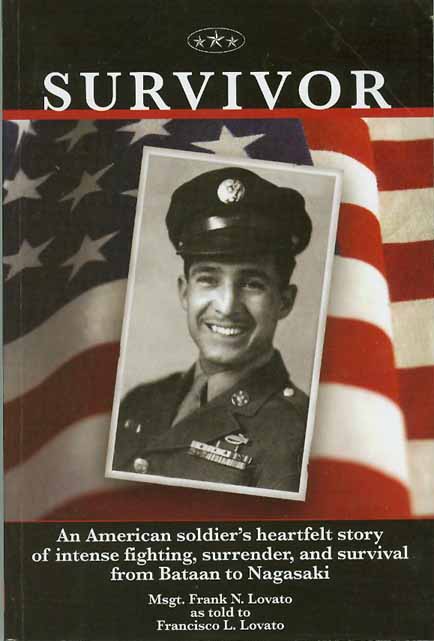
 A spell-binding story of gut-level survival and adaptation to violent cultural change, Tlalcoyote is set in Texas and Louisiana in the early 1820s. This well-researched novel takes you from Spanish Colonial Texas to the terror and bravery of a captive's life in a Comanche camp, on into the earthy passions of slave voodoo rites on a Louisiana plantation, and finally to the colorful streets of 19th-century New Orleans with all the violence and exoticism of the period. Engagingly human, sensual, and humorous, the adventures of young Rogelio Ramirez--the Tlalcoyote of the title--are ones you will long remember.
A spell-binding story of gut-level survival and adaptation to violent cultural change, Tlalcoyote is set in Texas and Louisiana in the early 1820s. This well-researched novel takes you from Spanish Colonial Texas to the terror and bravery of a captive's life in a Comanche camp, on into the earthy passions of slave voodoo rites on a Louisiana plantation, and finally to the colorful streets of 19th-century New Orleans with all the violence and exoticism of the period. Engagingly human, sensual, and humorous, the adventures of young Rogelio Ramirez--the Tlalcoyote of the title--are ones you will long remember.  Badmen, Bandits, and Folk Heroes is a comparative study of the literary and cinematic representation of Mexican American masculine identity from early twentieth-century adventure stories and movie Westerns through contemporary self-representations by Chicano/a writers and filmmakers. In this deeply compelling book, Juan J. Alonzo proposes a reconsideration of the early stereotypical depictions of Mexicans in fiction and film: rather than viewing stereotypes as unrelentingly negative, Alonzo presents them as part of a complex apparatus of identification and disavowal. Furthermore, Alonzo reassesses Chicano/a self-representation in literature and film, and argues that the Chicano/a expression of identity is characterized less by essentialism ...
Badmen, Bandits, and Folk Heroes is a comparative study of the literary and cinematic representation of Mexican American masculine identity from early twentieth-century adventure stories and movie Westerns through contemporary self-representations by Chicano/a writers and filmmakers. In this deeply compelling book, Juan J. Alonzo proposes a reconsideration of the early stereotypical depictions of Mexicans in fiction and film: rather than viewing stereotypes as unrelentingly negative, Alonzo presents them as part of a complex apparatus of identification and disavowal. Furthermore, Alonzo reassesses Chicano/a self-representation in literature and film, and argues that the Chicano/a expression of identity is characterized less by essentialism ...

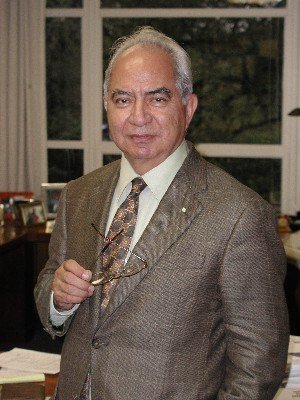

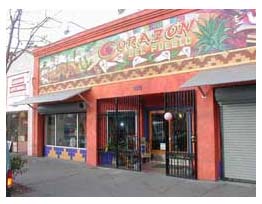
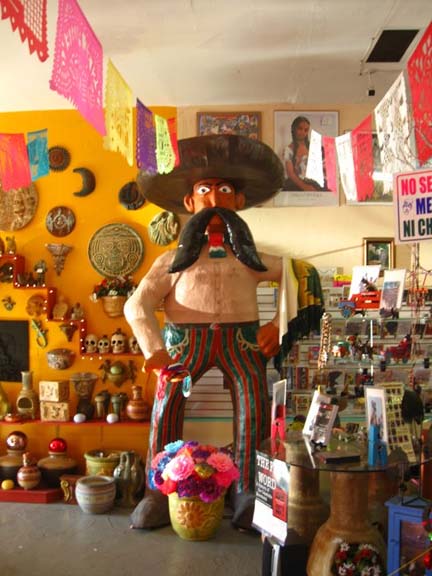


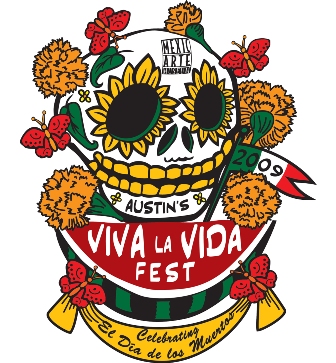
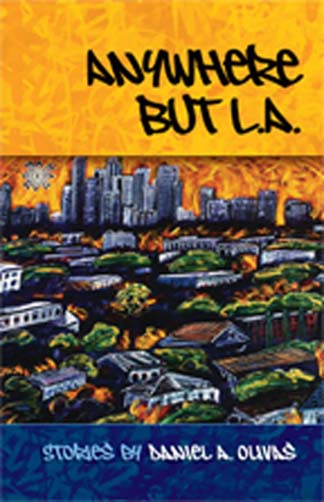 Anywhere But L.A. , Daniel A. Olivas's latest collection of short
stories, ranges from contemporary narratives to more traditional
cuentos de fantasma, giving us a vivid and honest portrait of modern
Latinos in search of their place in the world. Funny yet poignant,
Olivas's characters frequently amuse, sometimes disturb, and often
remind us of our own vulnerability. People who on the surface appear
to be ordinary and uncomplicated reveal their deepest secrets and
anxieties related to a variety of issues, such as race, gender, sexual
orientation, and the human condition in general. We are given a
glimpse into the complex emotions and attitudes of characters who are
trying to cope with the mysteries of life. These stories ring with
humor, insight, and power, and, like the city they describe, they
shift and slide and refuse to be pinned down as they drive the reader
to the very core of human existence through the colorful mural of a
thriving Latino community.
Anywhere But L.A. , Daniel A. Olivas's latest collection of short
stories, ranges from contemporary narratives to more traditional
cuentos de fantasma, giving us a vivid and honest portrait of modern
Latinos in search of their place in the world. Funny yet poignant,
Olivas's characters frequently amuse, sometimes disturb, and often
remind us of our own vulnerability. People who on the surface appear
to be ordinary and uncomplicated reveal their deepest secrets and
anxieties related to a variety of issues, such as race, gender, sexual
orientation, and the human condition in general. We are given a
glimpse into the complex emotions and attitudes of characters who are
trying to cope with the mysteries of life. These stories ring with
humor, insight, and power, and, like the city they describe, they
shift and slide and refuse to be pinned down as they drive the reader
to the very core of human existence through the colorful mural of a
thriving Latino community.
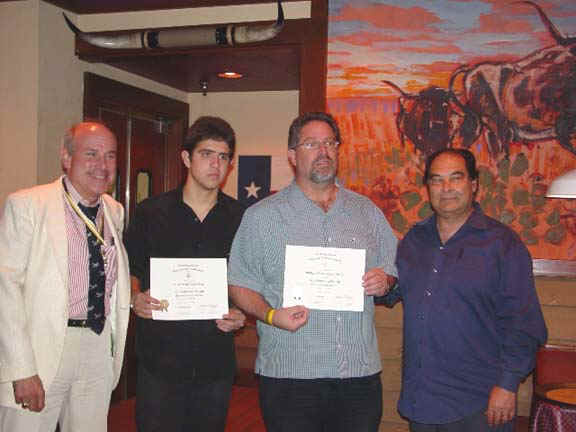
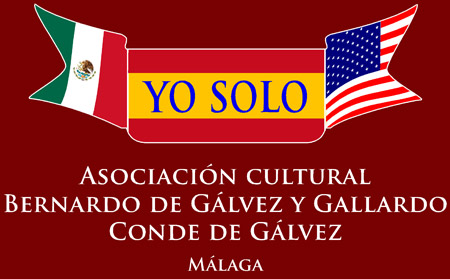
![[Louisiana Infantry 1779-1781 (Spain)]](louisiana%20flag.gif)

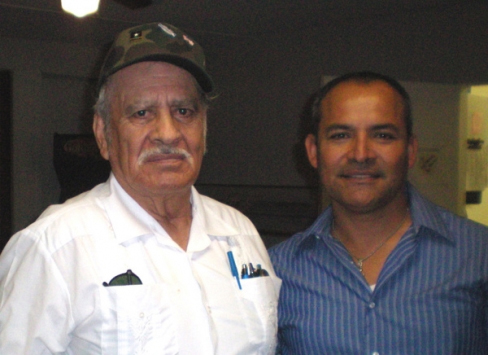
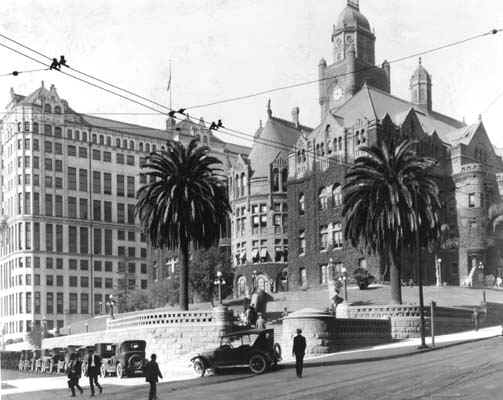
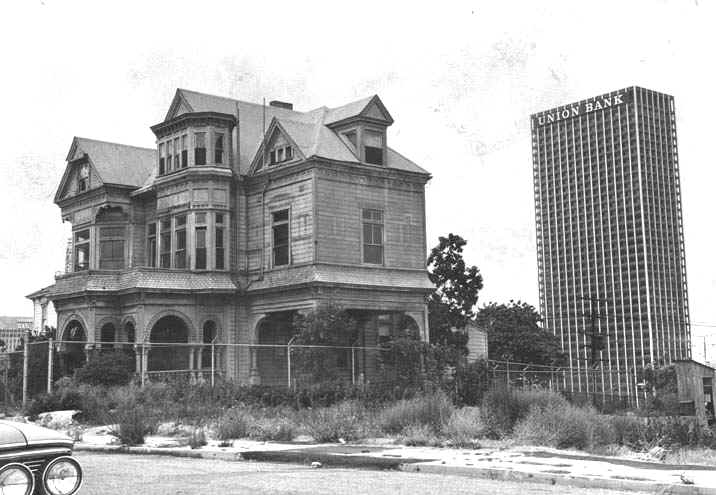
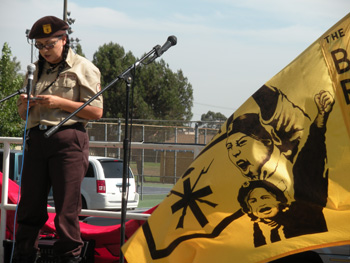

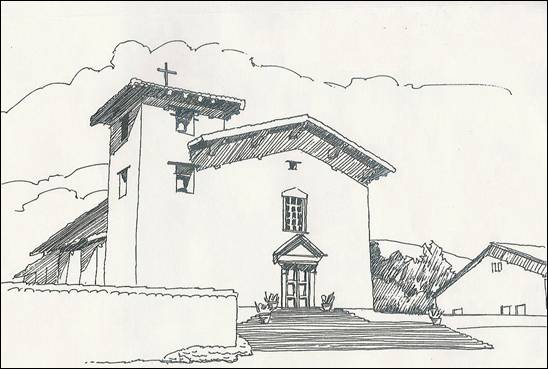
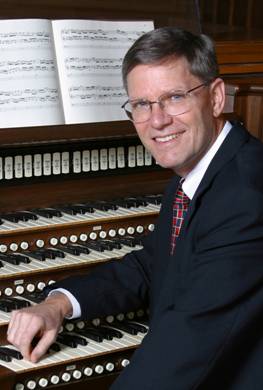 James
Welch, Organist, is a member of the Santa Clara Music Department
faculty.
James
Welch, Organist, is a member of the Santa Clara Music Department
faculty.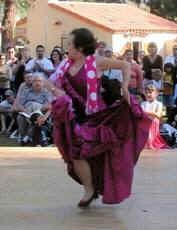
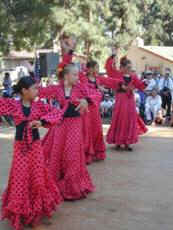
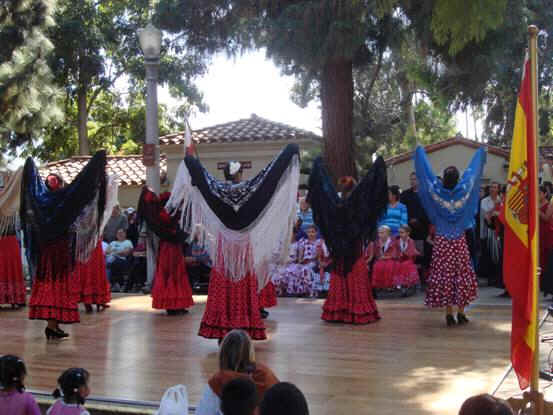
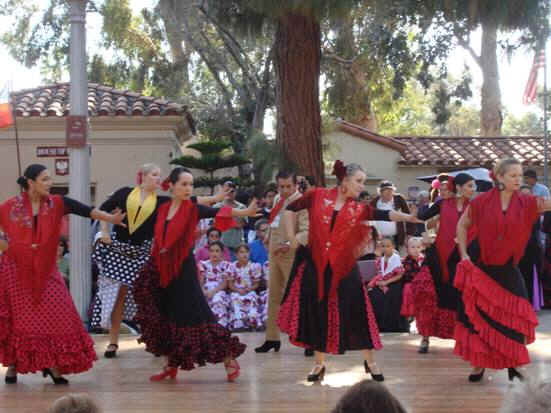
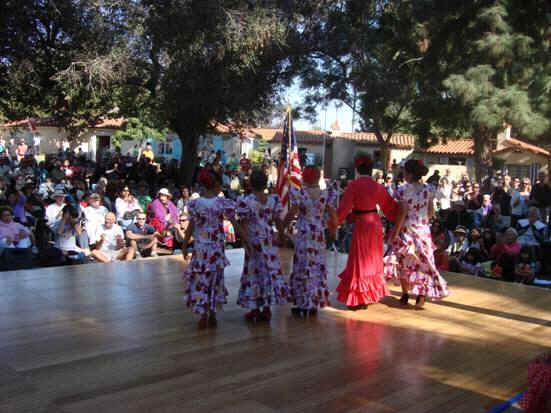
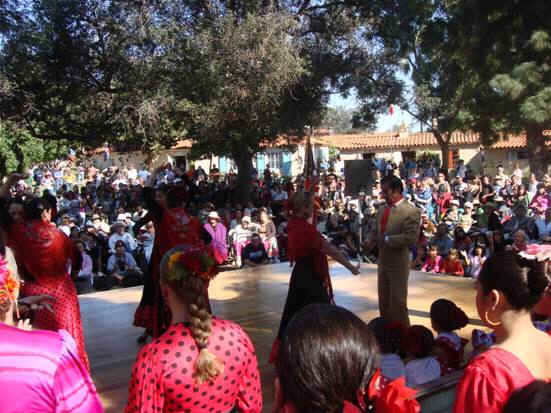
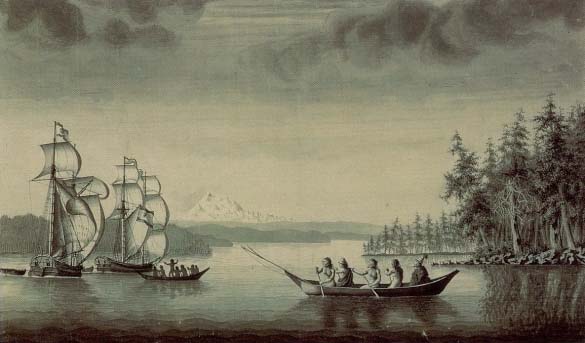
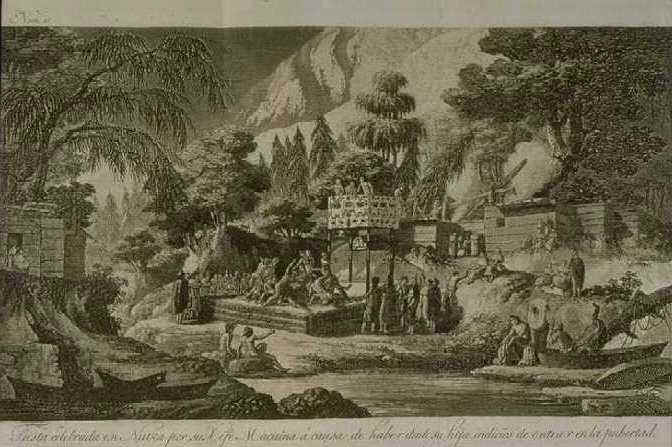

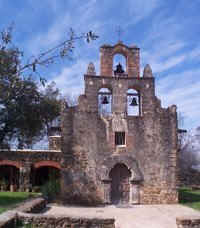 San Antonio missions to be used for state quarters
San Antonio missions to be used for state quarters
